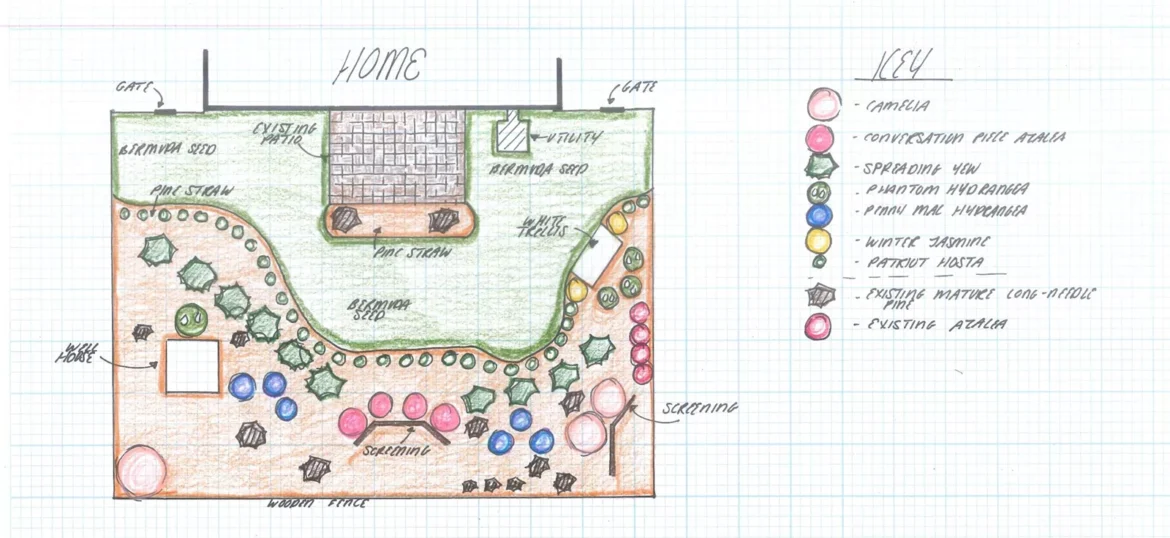
Dreaming of a stunning outdoor space? Whether it’s a vibrant garden, a relaxing patio, or a functional family area, a skilled landscape designer can turn those visions into reality. But before you even schedule that initial consultation with a local landscaping or landscape design professional, taking a few proactive steps will ensure a more productive and ultimately successful project.
This isn’t just about tidying up your yard (though that helps!). It’s about arming yourself with information and inspiration so you can effectively communicate your needs and desires. Here’s your essential pre-meeting checklist:
1. Define Your Vision (and Be Realistic!):
- Dream Big, Then Narrow It Down: Start by brainstorming! What do you want your outdoor space to be? A tranquil retreat? An entertainment hub? A productive vegetable garden? Jot down all your ideas, even the seemingly outlandish ones.
- Identify Your Needs vs. Wants: Now, prioritize. What are the absolute necessities? Perhaps a functional walkway or improved drainage. What are the “nice-to-haves,” like an outdoor kitchen or a fire pit? Understanding this distinction will help you and your local landscape designer stay on track and within budget.
- Consider Your Lifestyle: How do you and your family actually use your outdoor space? Do you host frequent gatherings? Have young children or pets? These factors will heavily influence the design.
- Think Long-Term: How do you envision using the space in 5, 10, or even 20 years? Planning for future needs can save you time and money down the road.
2. Gather Inspiration (Visuals are Key!):
- Create a Mood Board: Collect images from magazines, websites (like Pinterest and Houzz), and even your neighborhood walks that resonate with your aesthetic. This visual representation will be invaluable in communicating your style to your landscape design expert.
- Note Specific Elements: Don’t just save pretty pictures. Pay attention to specific plants you like, hardscaping materials that appeal to you (stone, brick, pavers), and design features you admire (water features, pergolas, outdoor lighting).
- Consider Your Home’s Style: Your landscape should complement your home’s architecture. Take photos of your house from different angles to share with your designer.
3. Understand Your Property (The Lay of the Land):
- Know Your Boundaries: Have a copy of your property survey if available. This will clearly define your property lines and any easements.
- Assess Existing Conditions: Take note of sun and shade patterns throughout the day, drainage issues, existing vegetation you want to keep or remove, and any slopes or unusual features.
- Consider Utilities: Be aware of the location of underground utilities (gas lines, water pipes, electrical wires). This is crucial for safe and effective local landscaping.
- Take Photos and Videos: Capture different areas of your yard in various lighting conditions. This will give the designer a better understanding of the existing space.
4. Set a Realistic Budget (Money Matters!):
- Determine Your Investment Range: Be honest with yourself about how much you’re willing and able to spend on your landscape design and installation. This will help your designer tailor their recommendations accordingly.
- Understand the Costs: Research the general costs associated with different landscaping elements (plants, hardscaping, labor). This will help you have realistic expectations.
- Be Prepared to Discuss Budget Early: Don’t wait until the end of the design process to discuss budget. Open communication from the start will save everyone time and frustration.
5. Prepare Your Questions (Be an Active Participant):
- Write Down Your Queries: Think about what you want to know about the designer’s process, experience, portfolio, and fees.
- Ask About Sustainability: If environmental considerations are important to you, inquire about their sustainable landscaping practices.
- Clarify the Scope of Work: Understand what services the designer provides (design only, design and installation, project management).
- Inquire About Timelines: Get a general idea of the design and potential installation timelines.
By taking the time to prepare before your initial meeting with a local landscape designer, you’ll be setting yourself up for a smoother, more collaborative, and ultimately more rewarding experience. You’ll be able to clearly articulate your vision, understand the possibilities, and work effectively with a professional to create the outdoor oasis you’ve always dreamed of. So, get started on this checklist today, and get ready to watch your landscaping dreams blossom!
